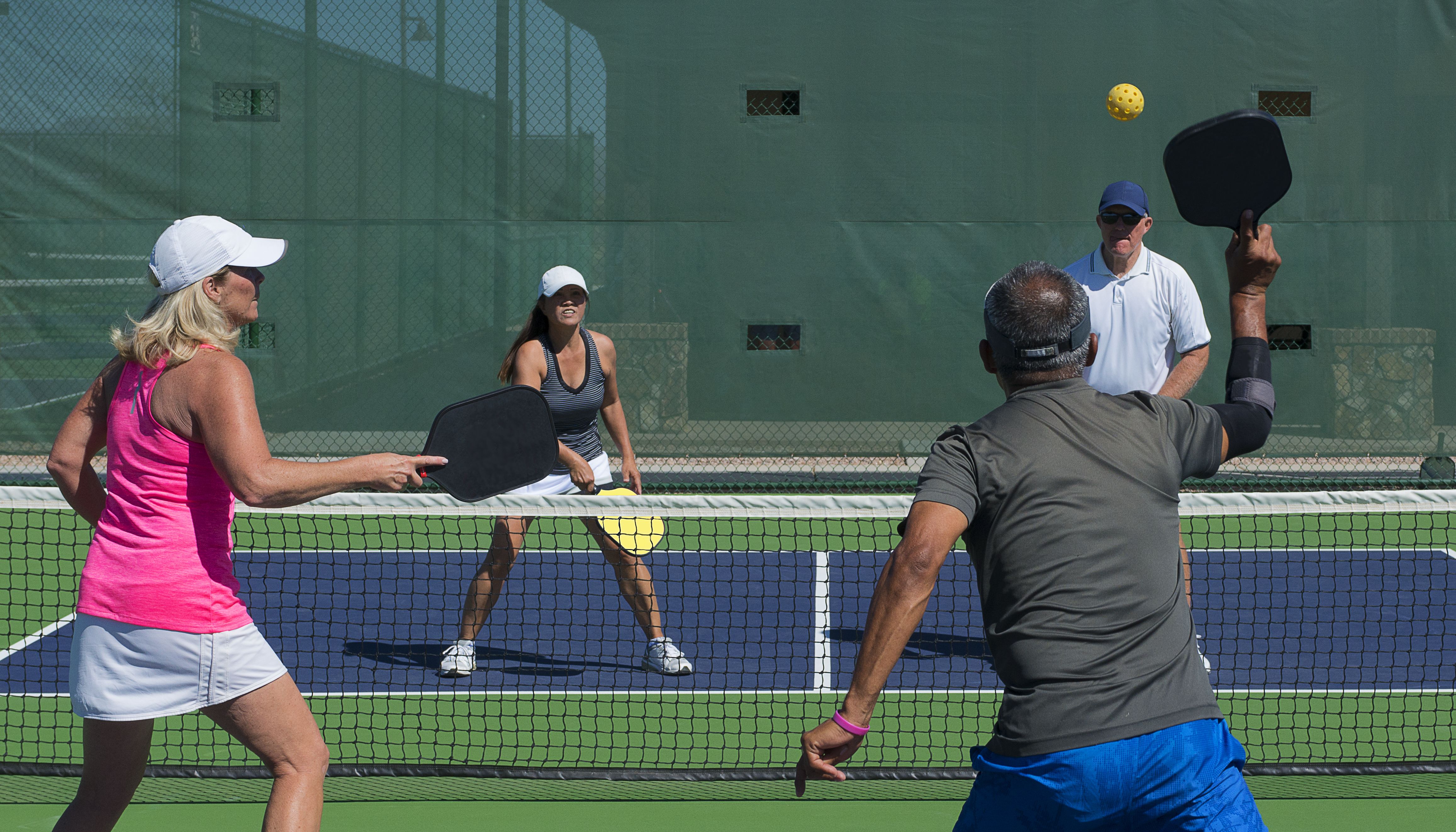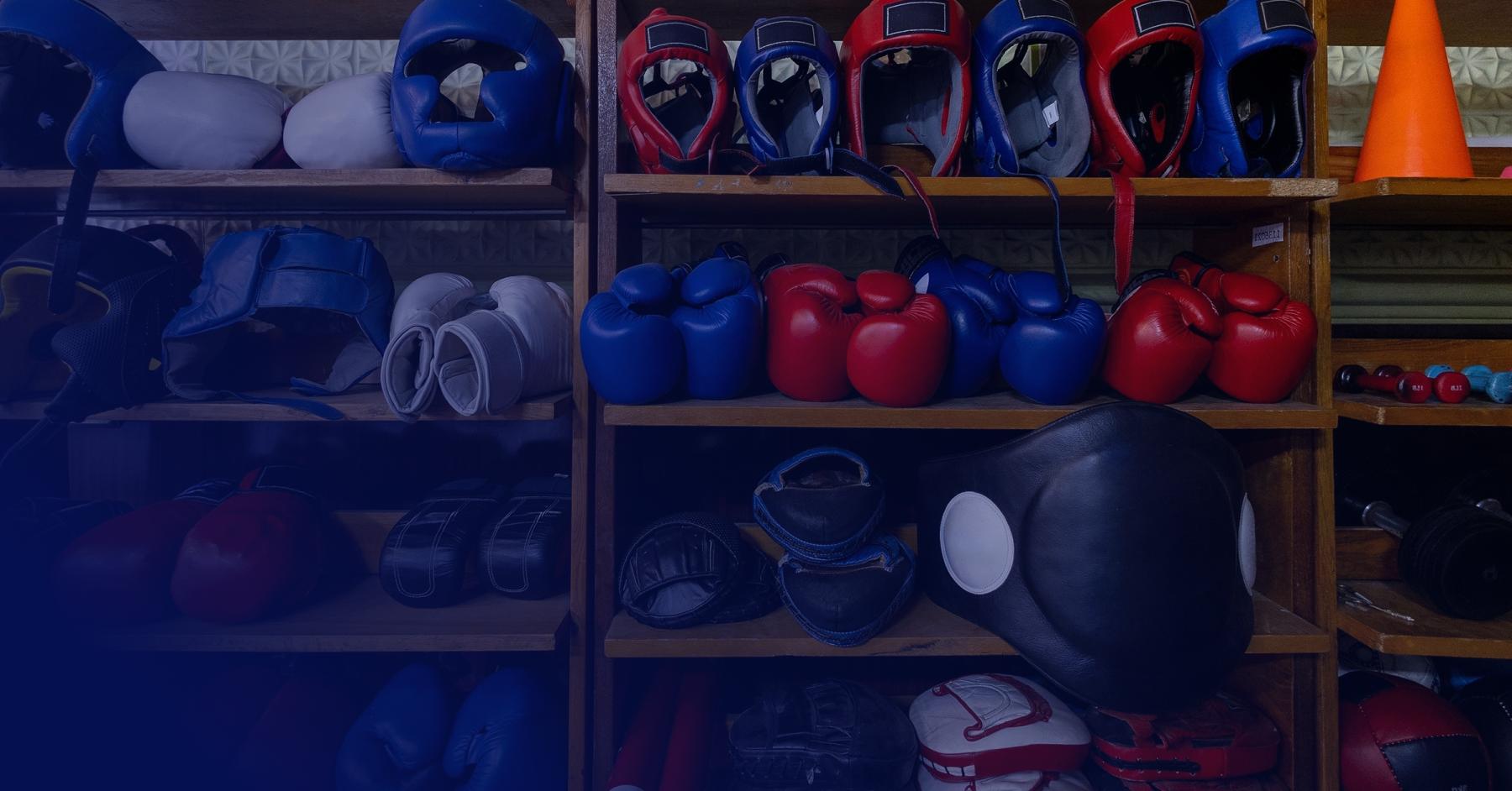Preventing Common Pickleball Injuries
Workout Injuries, Ankle Injuries, Knee Injuries

Pickleball’s popularity has grown rapidly in recent years. Unsurprisingly, these pickleball injuries have also become increasingly common. Luckily, there are ways to prevent them.
Since it first hit the scene in 1965, Pickleball has skyrocketed in popularity, becoming a favored recreational activity for people of all ages. Combining elements of tennis, ping-pong, and badminton, the sport counts 36.5 million players across the U.S. with more than 10,000 pickleball courts in use, according to Pickleheads, a forum for pickleball enthusiasts.
What makes the sport so popular? It’s relatively easy to learn, and can be played by any age. Yet that doesn’t mean pickleball players can’t get hurt. In fact, as more and more people rush to pickleball courts, they’re also rushing to orthopedists with a few common injuries. Before you pick up a pickleball racket, it’s important to learn about these common injuries and, more importantly, learn how to prevent them.
Five common pickleball injuries
Due to the constant running, twisting, and turning on the court that pickleball requires, players are most vulnerable to knee, ankle, and hip injuries. Swinging the paddle can also cause shoulder and elbow pain. That can lead to specific overuse or traumatic injuries, such as:
“Pickleball” elbow. Although swinging underhand puts less strain on the elbow than playing tennis, you can still develop tennis elbow, or tendonitis in the elbow ligaments.
Rotator cuff injury. Using an underhand swing is less stressful on the shoulder, but it can nevertheless strain the rotator cuff because of its repetitive motion.
MCl strain. The medial collateral ligament (MCL) running down the inside of your knee gives your knee its stability. However, it can be strained if you aren’t careful — and pickleball requires a lot of quick pivots that can strain the MCL or possibly tear it.
Achilles tendonitis. Your Achilles tendon stretches from your ankle to your calf. Though it’s strong and tough, it’s not indestructible. Jumping and pushing off on your toes can severely injure the Achilles tendon, resulting in painful Achilles tendonitis.
Fractures. Losing your balance and stumbling can happen when you run around the pickleball court. When you fall, your first instinct is often to stop the tumble with your wrist, which can fracture it. Or, if you land on your side, you could risk fracturing or even breaking your hip.
Recovering from pickleball injuries
As with any orthopedic injury, you should immediately rest at the first sign of pain. The RICE method — rest, ice, compression, and elevation — may resolve the issue in time. Taking over-the-counter anti-inflammatories may help, too. If the pain persists with no let up or if you suspect a serious trauma such as an MCL tear, see an orthopedist for treatment.
Four ways to prevent pickleball injuries
Luckily, there are some simple ways to prevent pickleball injuries (or any sports-related injury for that matter).
Invest in proper equipment. Are you using the wrong paddle? A sturdy paddle will absorb most of the impact every time you swing it. Or you may need a lighter paddle. Investing in the right paddle for you is a great way to avoid injuries. Additionally, make sure you’re wearing shoes that have good traction on the court.
Perfect your form. Picking up a Pickleball paddle and hitting a ball may seem simple compared to more intensive racket sports such as tennis. But the sport still requires proper technique to avoid injuries. Working with a trainer can help you learn to use your hips and legs when swinging to take the strain off your arm and shoulder.
Strength training. Strengthening the muscles around your knees and ankles can keep them safe from injury. To build up your ankle endurance, stand with your feet hip-width apart. Raise as high as you can on the balls of your feet and slowly lower. You can also try leg lifts to work your other leg muscles: Lie on your side on the floor with your knees on top of each other. Lift the top leg, keeping the knee straight and slightly behind you. Elevate the leg as high as you can, lower, and switch to the other leg.
Warm up. Like any sport, warming up is essential for injury prevention. Before competing in earnest, lightly jog for a few minutes and stretch your calves, quads, and hamstrings. Take a few practice lobs over the net, too.
Play pickleball without pain
People love pickleball, and it’s easy to see why. It’s a fun activity that also provides a vigorous workout. And you can enjoy it for many years to come by avoiding the most common injuries and by getting proper treatment if an injury does occur. The physical therapists at All Sports Physical Therapy are here to help you just that. Whether you want help learning how to prevent injuries or you want to recover from an injury so you can get back on the court as soon as possible, our expert PTs have you covered. Contact us today for a consultation.



